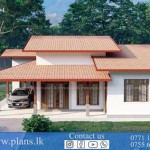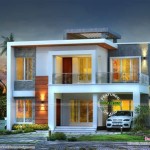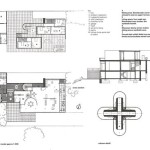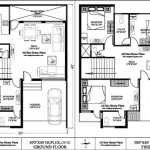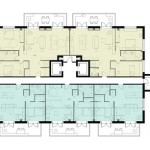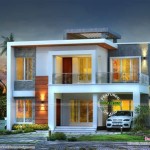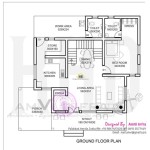Side Split House Plans With Garage: An In-Depth Exploration
Side split house plans, particularly those incorporating a garage, represent a popular and versatile architectural design choice. These designs offer a unique layout that can maximize space utilization, enhance curb appeal, and cater to specific lifestyle needs. The integration of a garage within a side split design further amplifies its practicality and functionality, making it an appealing option for homeowners seeking both aesthetic and practical living spaces.
Understanding the nuances of side split house plans with a garage involves considering various factors such as lot size, topography, desired living areas, and the specific configuration of the garage. These design plans are not a one-size-fits-all solution, and careful planning is essential to ensure the final structure aligns with the homeowner's preferences and functional requirements. This article delves into the key aspects of side split house plans with a garage, providing a comprehensive overview of their advantages, considerations, and design possibilities.
Key Features and Advantages of Side Split House Plans
Side split house plans are characterized by their distinct staggered floor levels, typically divided into three or more sections. This design separates living spaces vertically, creating distinct zones for different activities. The garage, often integrated into one of these levels, offers convenient access to the home while maintaining a cohesive architectural appearance. The advantages of this style are multifold.
One primary advantage lies in the effective separation of living spaces. The staggered levels allow for a natural division between areas such as the bedrooms, living room, and kitchen. This separation enhances privacy and reduces noise transmission between different parts of the house. For example, the bedrooms may be located on an upper level, providing a quiet retreat away from the more active living areas on the main level. This is particularly beneficial for families with young children or individuals who value peace and quiet.
Another significant benefit is the efficient use of space. The split-level design can be particularly advantageous on sloping lots, allowing for seamless integration with the existing topography. The garage can be incorporated into the lower level, partially submerged into the ground, minimizing the visual impact of the garage door and maximizing the use of the lot's natural contours. This can result in a more aesthetically pleasing and functional design compared to traditional single-level or two-story homes on challenging terrains. Furthermore, the staggered levels can create the illusion of more space, making the home feel larger and more open than its actual square footage might suggest.
Curb appeal is also a major consideration. Side split house plans with a garage can offer a distinctive and modern aesthetic. The varying rooflines and staggered levels create visual interest, while the integrated garage can be designed to complement the overall architectural style of the home. Strategic landscaping and thoughtful exterior detailing can further enhance the home's curb appeal, making it a standout feature in the neighborhood. The design flexibility also allows for customization to suit individual preferences, ensuring that the home reflects the homeowner's personal style.
The garage, being integrated often on a lower level, allows for direct access into the home, particularly useful during inclement weather. Groceries can be easily unloaded, and daily commutes become more convenient. This integration also minimizes the need to walk long distances from a detached garage, improving overall accessibility and safety, especially for individuals with mobility issues.
Beyond the tangible benefits, side split plans can offer a unique sense of flow and connectivity within the home. The staggered levels can create interesting architectural features such as open staircases and transitional spaces that connect different areas of the house. This can foster a sense of spaciousness and visual interest, making the home feel more dynamic and engaging. The design also allows for creative use of natural light, with windows strategically placed to maximize sunlight penetration and create bright and airy living spaces.
Design Considerations for Integrating a Garage
Integrating a garage into a side split house plan requires careful attention to detail to ensure functionality, aesthetics, and structural integrity. The placement, size, and style of the garage must be carefully considered to complement the overall design of the home and meet the specific needs of the homeowner.
One of the primary considerations is the placement of the garage. The garage can be attached to the side of the house, integrated into the lower level, or designed as a separate structure connected by a breezeway. The choice depends on the lot size, topography, and desired aesthetic. A side-entry garage can be a good option for maintaining curb appeal, as it minimizes the visual impact of the garage door from the street. Alternatively, an integrated garage on the lower level can be a practical solution for sloping lots, providing convenient access to the home while maximizing space utilization.
The size of the garage is another crucial factor. A single-car garage may suffice for individuals or couples with one vehicle, while families with multiple vehicles may require a two-car or even a three-car garage. The size of the garage should also consider storage needs. Many homeowners use their garages to store tools, equipment, and recreational items, so adequate space should be allocated for these purposes. It is crucial to consider the internal dimensions and ensure sufficient room for vehicle maneuverability and storage without feeling cramped. Overestimating space is generally preferable to underestimating, as storage needs tend to grow over time.
The style of the garage should also complement the overall architectural style of the home. The garage door should be chosen to match the exterior materials and finishes of the house, creating a cohesive and visually appealing design. Consider the material, color, and design of the garage door, ensuring that it aligns with the home's overall aesthetic. Windows can also be incorporated into the garage door to add natural light and visual interest. Details like decorative hardware and trim can further enhance the garage's appearance.
Beyond aesthetics, practical considerations are essential. The garage should be properly insulated to regulate temperature and prevent moisture buildup. Adequate ventilation is also important to prevent the accumulation of fumes and odors. The garage floor should be durable and easy to clean, as it is likely to be exposed to dirt, oil, and other contaminants. Consider installing a floor coating or sealant to protect the concrete and make it easier to maintain. Proper drainage is also crucial to prevent water from accumulating in the garage. A slightly sloped floor and a drainage system can help ensure that water is directed away from the building.
The garage also needs to be structurally sound and compliant with local building codes. Ensure that the garage is properly supported and reinforced to withstand the weight of vehicles and other stored items. The garage door should be properly installed and maintained to ensure safe operation. Security measures, such as a secure locking system and adequate lighting, should also be implemented to deter theft and vandalism.
Interior Layout and Functionality Considerations
The interior layout of a side split house plan with a garage should be carefully designed to maximize functionality and flow. The arrangement of living spaces, bedrooms, bathrooms, and other essential areas should be carefully considered to create a comfortable and convenient living environment.
The main level of a side split house typically houses the living room, dining room, and kitchen. These areas should be designed to flow seamlessly together, creating a spacious and open living space. The kitchen should be well-equipped with modern appliances and ample counter space for food preparation. A kitchen island can provide additional workspace and seating, making it a central gathering point for family and friends. The dining area should be conveniently located near the kitchen, allowing for easy serving and cleanup. The living room should be a comfortable and inviting space for relaxation and entertainment, with ample seating and natural light.
The upper level typically houses the bedrooms and bathrooms. The master bedroom should be a private retreat with its own en-suite bathroom and walk-in closet. The other bedrooms should be spacious and comfortable, with adequate closet space for storage. The bathrooms should be well-appointed with modern fixtures and finishes. A separate laundry room on the upper level can be a convenient feature, minimizing the need to carry laundry up and down stairs.
The lower level, often integrated with the garage, can be used for a variety of purposes such as a family room, recreation room, or home office. This level can also include a mudroom with direct access from the garage, providing a convenient place to store coats, shoes, and other items. A finished basement can add valuable living space to the home, providing additional room for entertainment, hobbies, or storage.
Accessibility is another important consideration. Staircases should be designed to be safe and comfortable, with adequate headroom and handrails. Consider incorporating universal design principles, such as wider doorways and grab bars in bathrooms, to make the home accessible to individuals with mobility issues. An elevator can be installed to provide access to all levels of the home, although this is a more costly option.
Finally, consider the placement of windows and doors to maximize natural light and ventilation. Large windows can bring in plenty of sunlight, creating bright and airy living spaces. Proper ventilation can help to regulate temperature and prevent moisture buildup. Consider incorporating skylights or solar tubes to bring natural light into interior spaces that may not have access to windows. Ensure that windows and doors are energy-efficient to minimize heat loss and reduce energy costs.

Split Level House Plans And Foyer Floor

Split Bedroom Ranch Home Plan With 2 Car Side Garage 42267wm Architectural Designs House Plans

Plan 5935nd Side Entry Garage Narrow Lot House Plans

Split Bedroom Modern Farmhouse With Side Loading Carport 56503sm Architectural Designs House Plans
Split Level Homes Designs G J Gardner

Plan 8963ah Split Level Home House Remodeling Plans Floor

Split Level Home Designs Stroud Homes

The Unique Shapes Of Minto S Back Split Designs In 60s And 70s

House Plan 4 Bedrooms 2 Bathrooms Garage 3234 Drummond Plans

Renovating Oakville S Side Split Houses Into Modern Family Homes Eastview
Related Posts

